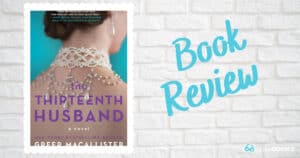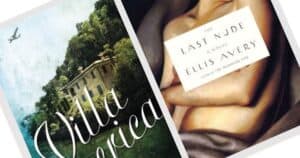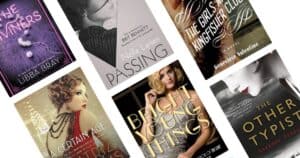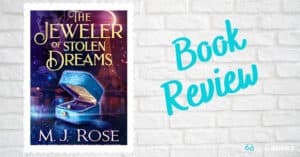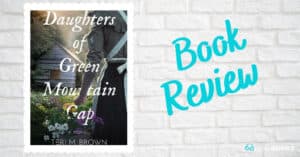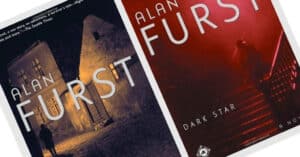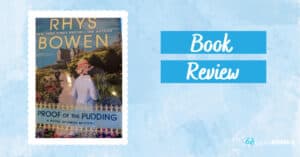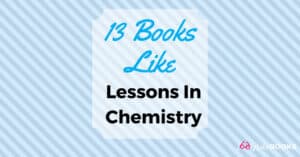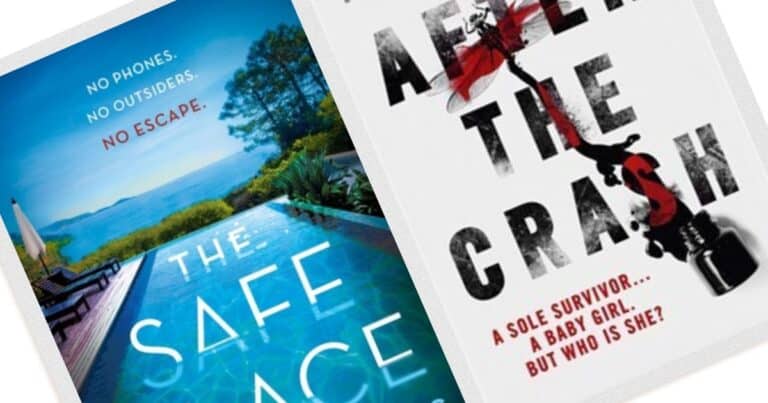Historical Fiction – Ultimate Guide To Escaping Into the Past
Looks Like Books contains affiliate links and is a member of the Amazon Services LLC Associates Program. If you make a purchase using one of these affiliate links I may receive compensation at no extra cost to you. See my Disclaimer to learn more.
Historical fiction might sound straightforward – stories set in the past, right? But the truth is, this genre is anything but simple. From sweeping epics set in ancient Rome to intimate dramas unfolding during the Cold War, historical fiction spans centuries, continents, and every possible human experience. And for those of us who love books that make us feel like we’ve time-traveled, it’s an endless treasure trove.
Whether you’re drawn to stories of war and resistance, long-lost art and literary legends, or quieter tales of family and fate, there’s a historical fiction subgenre just waiting to become your new favorite. Some novels stick close to real events, others take creative leaps – but the best ones immerse you in a world that feels just as vivid and complex as our own.
In this guide, we’ll explore the many flavors of historical fiction, with handpicked examples and links to deeper book lists you won’t want to miss. Because guess what? This genre is bigger (and bolder) than you think.
Key Takeaways: Historical Fiction Genre
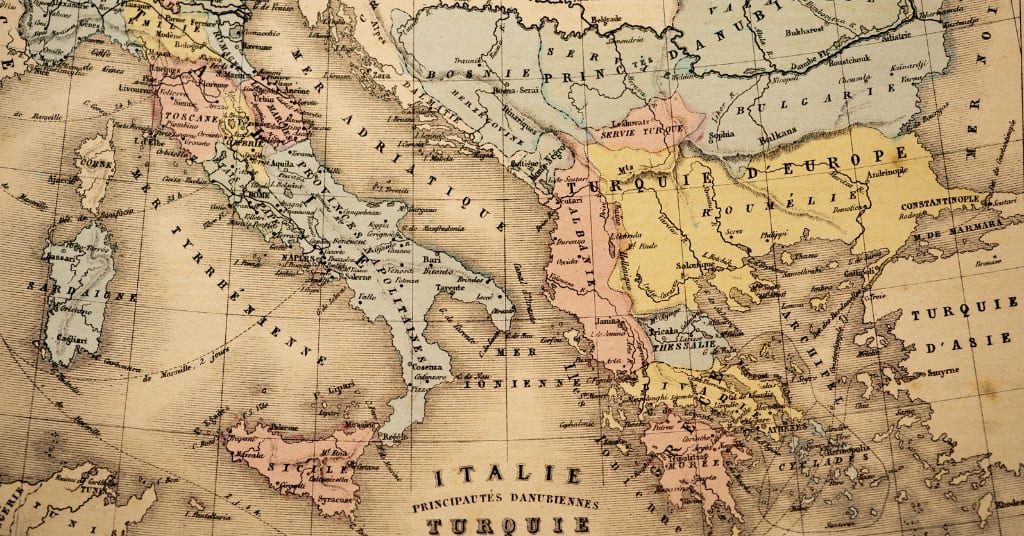
What Is Meant by Historical Fiction?
The actual historical fiction definition is simply this –
A literary genre where the story takes place sometime in the past.
How far back in time does the author have to transport the reader to fall into this genre? The general rule of thumb is that the story has to take place at least 50 years in the past to be considered “historical fiction.” 50 years will, in some cases, literally take the reader out of their lifetime and into another that they would have no other way of experiencing other than perhaps through the pages of their book.
Historical Fiction – Is the Story Real or Fake?
Historical fiction novels portray the setting of the book and the details of the period as accurately as possible. Historical fiction novels are set in a real place during a specific time in history that is a culturally recognizable time.
The action and detail in the story, however, can be a mix of actual historical events along with ones that are completely imagined and made up by the author.
Characters in historical fiction can be either completely fictional or real, recognizable people from history. In many cases, authors use both real and fictional characters.
If that seems confusing, it may be easier to understand with an example like this –
- A Christmas Carol by Charles Dickens – Set in Victorian England and historically accurate in terms of the setting and the traditions and social mores of the time, but Ebeneezer Scrooge is not a real person.
- The Adventures of Tom Sawyer – Set by the Mississippi River in the 1840s, the setting is historically accurate. Mark Twain created the characters of Tom Sawyer and Huck Finn from the experiences of boys he grew up with, but the characters themselves were not real people.
- Winter Garden by Kristin Hannah – Central to this story is the siege of Leningrad, which is a well-known historical event, but in the book Winter Garden, we meet fictional characters who supposedly lived through this very real event.
So you see, these are classic examples of how an author can blend together historically accurate places and times in history with characters or events from their imagination.
So, back to the original question of whether a historical fiction novel is real or fake.
It can have bits of both.
Main Traits of Historical Fiction Novels
Historical fiction novels portray the setting of the book and the details of the period as accurately as possible. Historical fiction novels are set in a real place during a specific time in history that is a culturally recognizable time.
The action and detail in the story, however, can be a mix of actual historical events along with ones that are completely imagined and made up by the author.
Characters in historical fiction can be either completely fictional or real, recognizable people from history. In many cases, authors use both real and fictional characters.
If that seems confusing, it may be easier to understand with an example like this –
- A Christmas Carol by Charles Dickens – Set in Victorian England and historically accurate in terms of the setting and the traditions and social mores of the time, but Ebeneezer Scrooge is not a real person.
- The Adventures of Tom Sawyer – Set by the Mississippi River in the 1840s, the setting is historically accurate. Mark Twain created the characters of Tom Sawyer and Huck Finn from the experiences of boys he grew up with, but the characters themselves were not real people.
- Winter Garden by Kristin Hannah – Central to this story is the siege of Leningrad, which is a well-known historical event, but in the book Winter Garden, we meet fictional characters who supposedly lived through this very real event.
So you see, these are classic examples of how an author can blend together historically accurate places and times in history with characters or events from their imagination.
So, back to the original question of whether a historical fiction novel is real or fake. And the answer is that it can have bits of both.
Now that we’ve covered the basics, let’s look at the wide variety of subgenres that live under the historical fiction umbrella.
Examples Of Historical Fiction Books
Historical fiction is definitely not a one-size-fits-all genre. There are many different types of historical fiction books, and not all of them will universally appeal to all readers. Here are some examples of different types of historical fiction novels.
Biographical & Literary Fiction
Fictional historical biographies tell a fictionalized story of a real person’s life. There are so many great examples of books in this genre. Here are a few examples of books that tell fictionalized stories of real people.
Many of these novels focus on reimagined lives of historical figures or explore deep emotional journeys during significant time periods. If you love diving into an author’s entire body of work, check out our author spotlights and bibliographies for more inspiration.
Historical Mysteries & Thrillers
Quite simply, these are just mysteries or thrillers that are set in the past.
A great example of a historical mystery series (with a little humor thrown in) is the Royal Spyness Mysteries by Rhys Bowen.
Another example is the Lady Julia Grey series by Deanna Raybourn.
Historical Romance
I must admit, historical romances are what got me hooked on historical fiction, to begin with. Who doesn’t like a little romance thrown in?
Think sweeping love stories set in wartime, royal courts, or small villages, where the stakes of love are heightened by the era. If you enjoy romantic historical fiction, you might also love our curated list of must-read romance novels that cross into the historical realm.
Examples? Can you say…Bridgerton?
How about Outlander?
While some may be tempted to dispute whether anything in the romance genre is worthwhile historical fiction, these two series were not only bestselling book series but also went on to become hugely popular television series.
In all honesty, the historical romance sub-genre is filled with many, many examples of really great historical fiction. The only difference is that they also involve a little romance.
Art & Cultural Heritage
From painters and musicians to stolen artifacts and lost masterpieces, these books bring creativity to life through a historical lens. If you’re intrigued by this genre, don’t miss our roundup of art-themed thrillers – full of suspense, secrets, and stolen art.
Historical Epics
These are historical novels that are typically written as series and cover multiple eras and long timeframes. One of the best examples of a historical epic series is Ken Follett’s Kingsbridge series, which begins in 12th-century England and ends three books and five centuries later. This is truly an epic story.
Wartime & Military History
Whether set during the trenches of WWI, the espionage world of WWII, or lesser-known conflicts, these novels often reveal human resilience through hardship. One of my favorite wartime picks includes The Rose Code.
Historical Fantasy & Alternate History
Historical fantasy novels allow the author to change some details of the past while keeping other details very much intact. In this example of historical fantasy, Westside depicts a New York City of the 1920s, which is very different from what most of us imagine to be the true New York of the 1920s that we are familiar with.
Alternate history books explore a “what if” situation. An author examines a specific point in history and considers what would have happened if things turned out differently. What if there was no Christopher Columbus, and therefore he didn’t land on any shore? What if the Allies had not prevailed during WWII? These are sometimes chilling narratives of what could have been.
Dual Time Novels
These stories shift between eras, often linking a present-day narrator with a long-buried mystery or ancestral secret. Popular examples include The Final Act Of Juliette Willoughby and Outlander, both of which artfully connect past and present in suspenseful, layered narratives.
Immigration & Diaspora Stories
These novels often center on displacement, resilience, and the tension between memory and assimilation. Books like The Henna Artist or The Island of Sea Women offer moving portrayals of culture, family, and identity across generations.
Children’s Historical Fiction
These books will often include elements of historical fantasy or time travel to facilitate the transition between the existing contemporary world and a time in the past. An excellent example of this is the Magic Tree House series by Mary Pope Osborne.
Who Writes the Best Historical Fiction?
The “best” historical fiction for you may not be the best historical fiction for someone else because everyone has different tastes in their reading material, and what appeals to you may not appeal to another person.
In order to determine which historical fiction authors you might like the most, you need to first decide on some things that will be unique to you.
- What period of history are you most interested in?
- Do you like biographical books, mysteries, thrillers, or something else?
Once you narrow down your likes and dislike,s you will be in a better position to search for and find a potential list of authors of historical fiction that might be a great fit for you.
Why Is Historical Fiction Important?
“There is nothing new in the world except the history you do not know.” ~Harry Truman
Historical fiction is a window into the past.
Reading well-written novels set in earlier time periods can teach us more about people, cultures, and events than any textbook ever did. And no, I’m not saying history classes have no value – but let’s be honest: they rarely bring the past to life.
Historical fiction does.
It helps us feel the struggles, triumphs, and everyday lives of those who came before us. These books give context to events, deepen our empathy, and make history stick in a way rote memorization never could.
Personally, I’ve learned more historical facts from reading novels than I ever retained from school. Just a few examples:
- I would never have pictured the Yorkshire moors of turn-of-the-century England without A Woman of Substance by Barbara Taylor Bradford.
- I wouldn’t have known that a courageous woman helped hundreds of Jewish children flee the Nazis without The Book of Lost Names by Kristin Harmel.
- I would have had no idea what went on at Bletchley Park during WWII if I hadn’t read The Rose Code by Kate Quinn.
- I’d never have understood what went into building a cathedral in the Middle Ages without The Pillars of the Earth by Ken Follett.
- I wouldn’t have known about the heroic librarians at the American Library in Paris without The Paris Library by Janet Skeslien Charles.
- I might never have imagined the love so powerful it led a king to renounce his crown without The Duchess by Wendy Holden.
- I wouldn’t have discovered ley lines in England without Paula Brackston’s Found Things series.
- I wouldn’t be imagining my own ancestors’ WWII-era lives in the Midwest without An Enemy Like Me by Teri M. Brown.
And that’s just the beginning.
The list of things I’ve learned – and continue to learn – from historical fiction could fill volumes. And that’s why I believe it’s such an important genre. It doesn’t just tell us what happened. It helps us understand why it mattered.
Who Wrote the First Work of Historical Fiction?
Some consider Sir Walter Scott the original trailblazer of historical fiction, thanks to his groundbreaking novel Waverley.
Born in 1771, Scott was a poet, historian, and author who grew up listening to tales of the Scottish Borderlands and devouring every book he could get his hands on — from history and poetry to folklore and drama.
While his earlier fame came from poetic romances like The Lady of the Lake, it was Waverley, published anonymously in 1814, that truly changed the game. This novel, and the series that followed — now known as The Waverley Novels — are widely regarded as the first true works of historical fiction. They transported readers to the Jacobite uprising of 1745 with a blend of historical accuracy and compelling narrative that felt entirely new for the time.
Historical fiction has held a beloved spot on the bookshelf ever since.
Personally, I love discovering new authors in genres I enjoy, and historical fiction is high on that list. Many of the writers featured in this guide have written multiple novels that continue the legacy Scott started: blending fact and imagination in ways that bring the past to life.
Frequently Asked Questions About Historical Fiction Books
What defines historical fiction as a genre?
Historical fiction is a genre where the story is set in the past, often before the author’s lifetime, and incorporates real events, people, or settings, blended with fictional characters or narratives.
What time periods are most popular in historical fiction?
Some of the most popular settings include WWII, the Victorian era, the Roaring Twenties, and ancient civilizations like Rome or Egypt. However, more authors are exploring overlooked decades and locations.
How accurate is historical fiction supposed to be?
While historical fiction should feel authentic, it’s still fiction. Authors often take creative liberties for storytelling, but many aim to stay true to key facts, events, and cultural details.
Is there a difference between historical fiction and historical romance?
Yes – historical fiction focuses on plot, setting, and historical events, while historical romance centers on a love story with historical elements as the backdrop.
You Might Also Like:
I just read a debut historical fiction novel and reviewed it, so you might want to check this book out. Beyond That the Sea, by Laura Spence-Ash.
Conclusion: Why Historical Fiction Still Resonates Today
Whether you love dual timelines, sweeping epics, or tightly woven wartime plots, historical fiction has something for every kind of reader. This genre transports us through time, helps us understand the past, and occasionally lets us imagine what might have been.
And remember, we’re always updating this guide with more unforgettable reads – so bookmark this page and check back often.
More Historical Fiction













